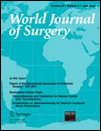Partial Small Bowel Resection with Sleeve Gastrectomy Increases Adiponectin Levels and Improves Glucose Homeostasis in Obese Rodents with Type 2 Diabetes
Presented at the 2011 meeting of the International Association of Endocrine Surgeons, August 30, 2011, Yokohama, Japan.
Abstract
Background
The aim of this study was to examine the effect of small bowel resection with and without sleeve gastrectomy on glucose homeostasis in an obese rodent model of type 2 diabetes.
Methods
Zucker diabetic fatty rats were randomized into three surgical groups: Sham, small bowel resection, and small bowel resection with sleeve gastrectomy (BRSG). Weight and fasting glucose levels were measured at randomization and monitored after surgery. Oral glucose tolerance testing was performed at baseline and 45 days after surgery to assess glucose homeostasis and peptide changes.
Results
At baseline, all animals exhibited impaired glucose tolerance and showed no difference in weight or fasting (area under the curve) AUCglucose. At sacrifice, Sham animals weighed more than BRSG animals (p = 0.047). At day 45, the Sham group experienced a significant increase in AUCglucose compared to baseline (p = 0.02), whereas there was no difference in AUCglucose in either surgical group at any time point: BR (p = 0.58) and BRSG (p = 0.56). Single-factor ANOVA showed a significant difference in AUCglucose of p = 0.004 between groups postoperatively: Sham (50,745 ± 11,170) versus BR (23,865 ± 432.6) (p = 0.01); Sham versus BRSG (28,710 ± 3188.8) (p = 0.02). There was no difference in plasma insulin, GLP-1, or adiponectin levels before surgery, although 45 days following surgery adiponectin levels where higher in the BRSG group (p = 0.004).
Conclusions
Partial small bowel resection improved glucose tolerance independent of weight. The combination of small bowel resection and sleeve gastrectomy leads to an increase in adiponectin levels, which may contribute to improved glucose homeostasis.




